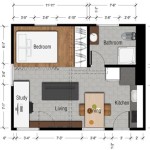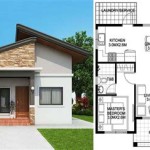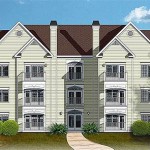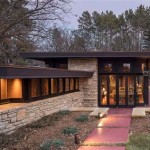Cape Cod Addition Floor Plans: Expanding Your Home with Classic Charm
Cape Cod style homes, with their steep rooflines, dormers, and symmetrical facades, evoke a sense of timelessness and New England charm. However, their original designs often feature limited square footage. Expanding a Cape Cod home requires careful planning and execution, with floor plans being the crucial blueprint for success. Understanding the nuances of Cape Cod architecture and how additions integrate with the existing structure is paramount to creating a seamless and functional living space.
When considering a Cape Cod addition, homeowners must navigate challenges related to rooflines, existing wall structures, and maintaining the architectural integrity of the home. A well-designed floor plan addresses these considerations, providing a clear roadmap for the construction process and ensuring the final result complements the original design while meeting the homeowners' needs.
This article explores the essential aspects of Cape Cod addition floor plans, outlining key considerations, common addition types, and design strategies for achieving a successful and aesthetically pleasing expansion. From understanding structural limitations to maximizing usable space, a comprehensive approach to floor plan development is essential for a successful renovation project.
Understanding the Existing Structure
Before diving into specific floor plan ideas, a thorough understanding of the existing Cape Cod home is crucial. This involves a detailed assessment of the foundation, framing, roof structure, and layout. Identifying load-bearing walls, plumbing locations, and electrical wiring is paramount for determining the feasibility and cost of different addition options.
The foundation is a critical factor. Most older Cape Cod homes feature a crawl space or a partial basement. Adding a full basement beneath the new addition can significantly increase usable space but requires extensive excavation and potentially underpinning the existing foundation. Slab-on-grade foundations are also an option, though they may not be suitable for areas prone to flooding or where a crawl space is desired for access to utilities.
The framing of the existing home will dictate how the addition integrates structurally. Matching the framing materials and techniques ensures a cohesive and structurally sound connection. Attention must be paid to how the new roofline ties into the existing roof, maintaining a consistent pitch and avoiding awkward transitions. This often involves working with a structural engineer to ensure the new construction adequately supports the existing structure and vice versa.
Existing utilities, such as plumbing and electrical systems, must be carefully considered. Relocating these services can be expensive and disruptive, so it's often beneficial to design the addition to minimize alterations to existing infrastructure. Moreover, ensuring that the existing systems have the capacity to handle the increased demand from the new addition is essential. This might involve upgrading the electrical panel, water heater, or septic system.
Common Types of Cape Cod Additions
Several types of additions are commonly used to expand Cape Cod homes, each with its own advantages and disadvantages. The best option depends on the homeowner's needs, budget, and the specific characteristics of the property.
Rear Additions:
These additions extend the footprint of the home to the rear, often creating a larger kitchen, family room, or master suite. Rear additions are relatively straightforward to construct and can significantly increase living space without drastically altering the front facade of the home. They are often the most cost-effective option for expanding a Cape Cod.Side Additions:
Side additions expand the home's footprint to the side, providing additional living space on a single level or multiple levels. Side additions can be more complex to design and construct, as they may require modifications to the existing roofline and potentially impact the home's symmetry. However, they can be an excellent option for adding a garage, an in-law suite, or a larger living area.Dormer Additions:
Dormers are vertical windows that project from the roof, creating additional headroom and usable space in the attic. Adding dormers can transform an unfinished attic into a functional living space, such as a bedroom, office, or playroom. Dormer additions are a popular option for Cape Cod homes, as they maintain the home's characteristic roofline while adding valuable square footage. However, careful planning is needed to ensure the dormers are properly sized and positioned to maintain the home's aesthetic balance.Second-Story Additions:
Adding a full second story to a Cape Cod home effectively doubles the living space. This is the most extensive type of addition and requires significant structural modifications. Second-story additions can dramatically alter the appearance of the home, potentially detracting from its original Cape Cod charm. However, they can be a viable option for homeowners who need significant additional space and are willing to undertake a more complex renovation project.Design Strategies for Seamless Integration
The key to a successful Cape Cod addition lies in seamlessly integrating the new space with the existing structure. This requires careful attention to design details, material selection, and construction techniques. Creating a cohesive flow between the old and new spaces is essential for maintaining the home's aesthetic appeal and functionality.
Maintaining Architectural Style:
Preserving the architectural details of the original Cape Cod home is crucial for creating a cohesive and aesthetically pleasing addition. This includes matching the roof pitch, siding materials, window styles, and trim details. Replicating these elements in the new addition helps to blend the old and new seamlessly. In some cases, it may be necessary to salvage or replicate existing materials to ensure a perfect match. Paying attention to these details will prevent the addition from appearing as an afterthought and maintain the integrity of the home's original design.Creating a Natural Flow:
The floor plan should facilitate a natural and intuitive flow between the existing home and the addition. This involves carefully considering the placement of doorways, hallways, and transitions. Avoid creating awkward or disjointed spaces that disrupt the flow of movement. Open floor plans can be an effective way to connect the old and new spaces, creating a larger, more unified living area. However, it's important to define distinct zones within the open plan to maintain a sense of organization and functionality.Maximizing Natural Light:
Cape Cod homes can sometimes be dark, particularly in the attic or upper levels. Incorporating ample natural light into the addition is essential for creating a bright and inviting space. This can be achieved through the use of large windows, skylights, and strategically placed dormers. Consider the orientation of the addition and position windows to capture sunlight throughout the day. Light-colored paint and finishes will also help to reflect light and brighten the interior spaces. Natural light is especially important in attic spaces converted into living areas.Addressing Structural Considerations:
As previously mentioned, structural considerations are paramount when planning a Cape Cod addition. Working with a qualified architect and structural engineer is essential for ensuring the structural integrity of the home and the addition. This involves assessing the existing foundation, framing, and roof structure to determine the best way to support the new construction. Proper reinforcement and modifications may be necessary to ensure the home can withstand the additional load. Failure to address these structural concerns can lead to serious problems, such as foundation settlement, roof leaks, and structural instability.Accessibility and Code Compliance:
The floor plan must comply with all applicable building codes and accessibility requirements. This includes ensuring adequate headroom, egress windows, and accessible pathways. If the addition includes a new bathroom or kitchen, it must also meet the plumbing and electrical code requirements. Consider the needs of all occupants, including those with disabilities or mobility limitations. Incorporating universal design principles into the floor plan can make the home more accessible and comfortable for everyone. Check with local building departments to ensure adherence to current regulations.Budgeting and Cost Estimation:
Developing a realistic budget is an essential part of the planning process. Cape Cod additions can be expensive, particularly if they involve significant structural modifications or complex design features. Obtain multiple quotes from reputable contractors to get an accurate estimate of the project costs. Be prepared to adjust the floor plan and design to stay within budget. Prioritize essential features and consider phasing the project to spread out the expenses over time. Unexpected costs can arise during construction, so it's wise to set aside a contingency fund to cover unforeseen expenses.Professional Consultation:
Engaging with professionals such as architects, structural engineers, and experienced contractors is highly recommended. Their expertise can help navigate the complexities of Cape Cod additions, ensuring a well-designed, structurally sound, and aesthetically pleasing result. They can also provide valuable insights into cost-effective solutions and potential challenges.By carefully considering these factors and working with experienced professionals, homeowners can create a Cape Cod addition floor plan that maximizes usable space, maintains the home's architectural integrity, and enhances its overall value and appeal.

Cape Cod Second Floor Additions Before And After Bluestem

Space Planning A Cape Add On Building Advisor

Preview Cape Cod House Plans Modular Home Exterior

Cape Cod Floor Plans Monster House

Cape Cod Addition

Gallery Of Cape Cod Modern House Addition Hammer Architects 15

Fabulous Exclusive Cape Cod House Plan With Main Floor Master 790056glv Architectural Designs Plans

Cape Cod House Plan With First Floor Master Attached Garage

Cape Cod House Plans With Gabled Dormers

Cape Cod House Plan With 3 Bedrooms And 2 5 Baths 1475








